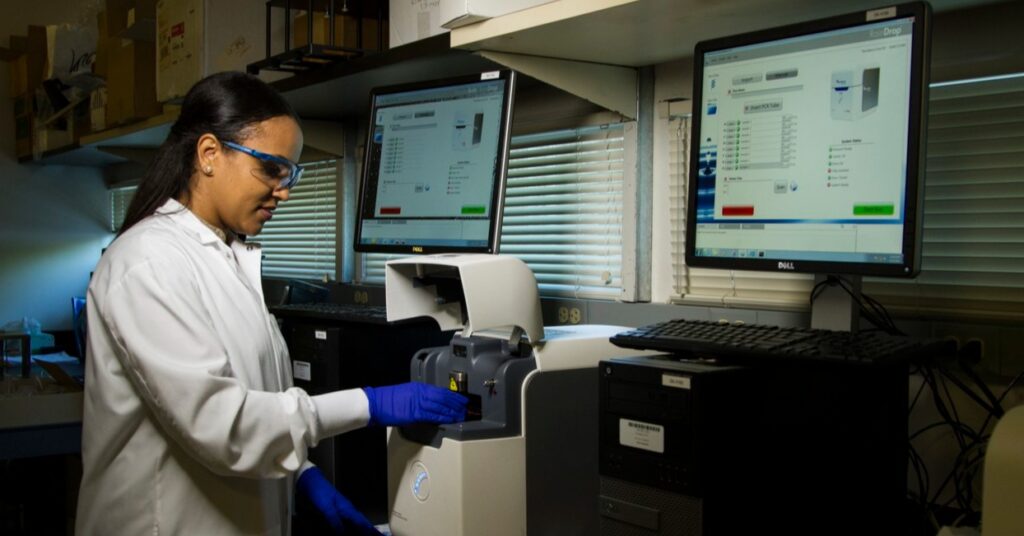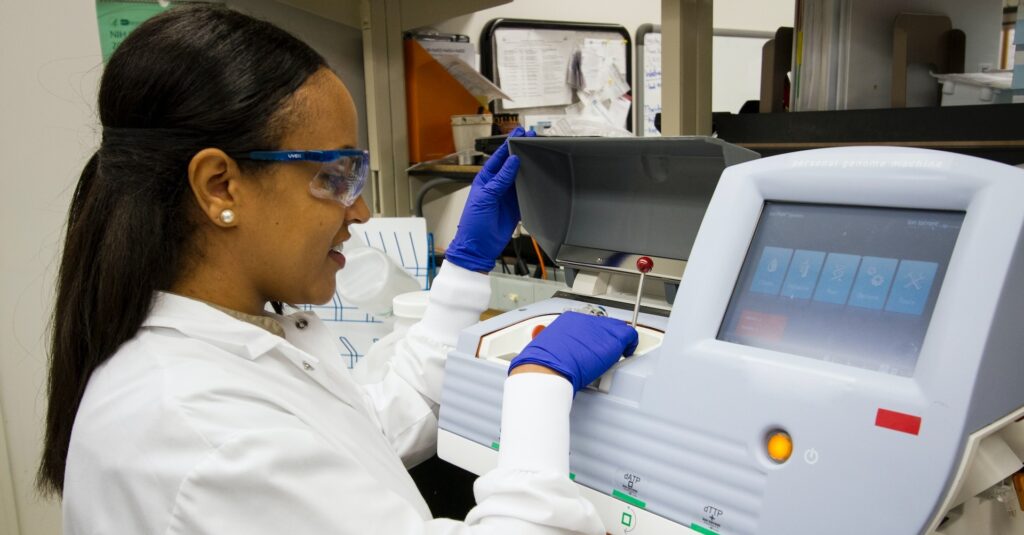
What Is the Epidemiological Triangle?
The epidemiological triad or triangle is an organized methodology used [...]

Movement can be medicine, and different types of specialists employ it to treat everything from sports injuries to genetic conditions. What exercise physiologists and physical therapists do for patients can look similar at first glance, but their training and the techniques they use are substantially different.
Humanity’s love affair with exercise may seem like a relatively recent development, but movement has been a part of medicine for thousands of years. The first recorded instance of a doctor prescribing exercise for patients occurred in 600 BCE, when an Indian physician named Sushruta recommended that patients exercise daily to prevent and treat diseases and promote recovery from physical injuries. In the centuries since, medicine has consistently asserted that movement can strengthen the body, keep the mind sharp, and prevent illness.
Today, doctors regularly write exercise prescriptions and prescribe other movement therapies. Various specialists, from physical therapists to coaches, help patients meet their fitness, mobility, and movement goals. Exercise physiologists (sometimes called kinesiotherapists) and physical therapists are two types of providers who use movement to help patients structure physical activities to help alleviate pain, restore flexibility and range of motion, and restore health.
There are plenty of other similarities between these specialists. Both study anatomy, biomechanics, the cardiopulmonary system, and nervous system. Both work with people of all ages and with all kinds of conditions. However, there are also significant differences between exercise physiologists and physical therapists. The biggest might be that physical therapists are always considered medical providers, meaning that they can diagnose patients. They can work in hospitals and nursing homes and bill patients’ insurance companies in the same way doctors do.
In contrast, only some exercise physiologists (specifically clinical exercise physiologists) can work in medical settings. That doesn’t mean that exercise physiologists are less essential than physical therapists. They can play a very significant role in a patient’s recovery—especially in sports medicine.
Whether you’re merely curious about the difference between exercise physiologists and physical therapists, or you’re wondering which career path is the better fit, keep reading. In this article, we’ll cover:
To understand the difference between exercise physiologists and physical therapists, you need to understand each discipline.
Exercise physiology is a branch of healthcare focused on the biological effects of exercise and physical activity on the body’s systems (including the brain). Exercise physiologists are not athletic trainers, conditioning coaches, or fitness coaches. Rather, they are practitioners who work with patients to treat and prevent diseases and promote recovery after injuries. Exercise physiologists may also conduct research into how movement and exercise can reduce or reverse the progression of diseases. In general, the goal of exercise physiology is to enhance quality of life by increasing fitness levels.
Physical therapy is a branch of healthcare focused on restoring patients’ quality of life by improving functional abilities, increasing the range of motion, and building strength. Physical therapy treatment plans include exercise but may also utilize electrical muscle stimulation, manual therapy, hot and cold therapy, laser therapy, and traction. The goal of physical therapy is to enhance quality of life by using movement to manage pain, recover from injuries, and get well after an illness.
The responsibilities of exercise physiologists and physical therapists overlap quite a bit. For instance, both specialists:
Exercise physiologists can also:
Physical therapists (sometimes called physiotherapists or PTs) can also:
Some clinicians in exercise physiology believe that there is more overlap in the responsibilities between the two disciplines than most people acknowledge. Many experts disagree with that view. Both sides are represented below:
It may be that in the future, clinical exercise physiologists will also work in PT, but for now, these disciplines attract different types of providers and patients.
PTs and exercise physiologists work with many of the same types of patients. Both can work with the sick, injured, infirm, and elderly. However, they often work in different types of facilities.
Some exercise physiologists work as clinicians in the same medical settings as PTs, providing clinical care for patients with everything from cancer to heart and lung diseases. Others run their own performance enhancement practices or work as sports performance consultants for athletic training facilities, exercise managers for sports leagues, or fitness trainers or wellness directors in corporate settings. This means that exercise physiologists frequently work with people who aren’t sick or injured, but rather have personal, non-medical fitness goals not prescribed by a physician or medical specialist.
Most physical therapists, on the other hand, work in hospitals, medical offices, and nursing homes. Some provide in-home care to patients through home healthcare agencies. They typically work with people under the care of physicians and other specialists. These doctors have prescribed PT to treat specific physical issues as varied as broken bones and movement problems caused by cancers or neurological issues.
The educational requirements for each role are quite different. Exercise physiologists must hold at least a bachelor’s degree in kinesiology, exercise science, or a related field. Clinical exercise physiologists typically need:
Earning a Master of Science in Kinesiology (which may be called a master’s degree in exercise physiology at some schools), an MS in Sports Science, or PhD in Kinesiology isn’t necessary, though having one of these degrees may make it easier to find employment, especially in medical settings.
Topics covered in advanced master’s degree programs for exercise physiologists include:
Physical therapists must earn a Doctor of Physical Therapy (DPT) degree and complete clinical rotations and a one-year residency before passing the National Physical Therapy Examination to practice. From there, PTs can pursue numerous physical therapy certification programs (more on this below) in different areas of specialization. The Physical Therapist Centralized Application Service maintains a list of all accredited DPT programs. Students in those programs take courses like:
Physical therapists also need to apply for a PT license in the state where they’ll work. In contrast, there are no national standards for exercise physiologists when it comes to either academics or licensing. Some states require exercise physiologists to be licensed while others do not, and exercise physiology as a discipline is largely unregulated.
The major organizations that provide credentials and certifications for exercise physiologists include the American Society of Exercise Physiologists (ASEP), American College of Sports Medicine (ACSM), the National Academy of Sports Medicine (NASM) and American Kinesiotherapy Association. The gold standard in exercise physiology certification is the Board Certified Exercise Physiologist (EPC) credential offered by ASEP. Many exercise physiologists also pursue such credentials as the:
Physical therapists don’t need specialty certifications, but having one or more certifications can lead to greater opportunities for licensed PTs. Physical therapists have plenty of specialty certifications to choose from. The American Board of Physical Therapy Specialties (ABPTS), for example, offers credentials in the following areas:
Physical therapists tend to make more money than exercise physiologists. The median salary for a physical therapist is $85,000, according to APTA, while the US Bureau of Labor Statistics reports that the median pay for exercise physiologists is just $49,270 per year. A lot of factors can influence how much a provider is paid, however. An exercise physiologist working as a wellness director in a large corporation headquartered in a big city might make more than a physical therapist working for a home healthcare agency in a small town.
The answer to this question depends on:
If you want a career that puts you on the front lines of medicine, you should probably choose physical therapy. But if you think you might prefer to work with elite athletes who want to enhance their performance on the field (and you’re willing to grow your own practice), exercise physiology might be the better fit.
If you’re not sure where your interests lie, consider earning a BS in kinesiotherapy. Getting this degree will prepare you to apply to DPT programs while also giving you the skills and knowledge to begin working as an exercise physiologist. Whether you decide you enjoy exercise physiology and want to stick with it, or develop a passion for PT during your undergrad years, think carefully before enrolling in any advanced degree programs. Becoming a physical therapist can take eight or more years of study, but the entry-level pay is usually high enough to justify the cost of the requisite degrees. Some exercise physiologists go to graduate school and earn doctoral degrees, but still make less than PT assistants and licensed practical nurses in medical settings.
It may be that the most significant difference between exercise physiology and physical therapy lies not in the practices themselves but in the relative level of prestige. For those who love the science of exercise and its benefits, the fact that many people have never heard of kinesiotherapy and that building a lucrative career in it may be an uphill battle might not matter. But if you want to make the best possible money providing movement as medicine, physical therapy is still the way to go.
Questions or feedback? Email editor@noodle.com

The epidemiological triad or triangle is an organized methodology used [...]

A family nurse practitioner (FNP) provides comprehensive primary health care [...]

FNPs practice in a broad range of health care settings. [...]

Some epidemiologists assist pharmaceutical companies in developing safer medicines. Some [...]

A Bachelor of Science in Nursing (BSN) is a four-year [...]
Categorized as: Physical Therapy, Nursing & Healthcare